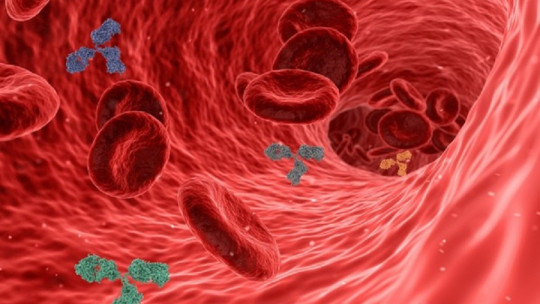Relaxin is a protein hormone that was first described in 1926 by the American Doctor Frederick Hisaw. Hormones are natural substances produced by the body that act as chemical messengers. They help transmit information between cells and systems and affect most functions of our body.
There are sex hormones called “male” and “female” because of their main role in people of one of the two sexes, although both men and women produce both types of hormones. Relaxin is a “female” hormone known primarily for its role in pregnancy. Recently, new studies have demonstrated its effects on other body systems and its possible usefulness as a therapeutic agent is being investigated.
In this article we will see what relaxin is its main functions in the body and the pathologies associated with altered levels of this hormone.
What is relaxin?
Relaxin is a hormone that prepares the birth canal and stimulates the mammary glands during pregnancy This hormone belongs to the same family as insulin and carries out its activity through the RXFP1 receptor.
The RXFP1 receptor encodes a transmembrane protein. The encoded protein, as a receptor for the protein hormone relaxin, plays a fundamental role in sperm motility, pregnancy and childbirth Decreased expression of this gene may play a role in endometriosis.
The control of relaxin production is still, in part, unknown. During the menstrual cycle, relaxin production by the ovary is thought to be stimulated by luteinizing hormone (LH) from the pituitary gland. During pregnancy, its release would be stimulated by human chorionic gonadotropin (hCG).

Relaxin is produced in large quantities from the first trimester of pregnancy Its function is to relax muscles, joints and ligaments so that the fetus can accommodate itself as it grows and then pass through the birth canal. In addition, high levels of relaxin, in the last days of pregnancy, also relax the uterus to facilitate childbirth.
In each menstrual cycle, a follicle is chosen at random, where the egg grows and matures. The follicle grows to about 20 mm in size, then ruptures and expels the egg. The corpus luteum is a dynamic tissue that forms after the oocyte has been released from the ovarian follicle. The corpus luteum is responsible for producing certain hormones in the event of conception to prepare the uterus for pregnancy, among them: relaxin.
Relaxin It is produced by the corpus luteum and also by the placenta a, in the event that the pregnancy continues its course.
The role of relaxin is still being explored, but it is believed to be related to the general increase in muscle flexibility needed in the face of childbirth, as well as the increase in flexibility in the pubic area during pregnancy. Relaxin also helps reduce spontaneous contractions of the uterus and maintain pregnancy. In addition, there is evidence that high levels of relaxin influence the softening of the cervix that occurs as delivery approaches.
From the fourth month of pregnancy and at the time of childbirth, the body produces a greater amount of relaxin. Its effects cause collagen production to decrease , the decrease in collagen influences the strength of the ligaments, which become more elastic. Which allows greater mobility of the joints in general.
Until now, only the function of relaxin in pregnant people and its influence during pregnancy was known. But, recent studies have shown that relaxin affects many other body systems. Fibrosis is the development of hard tissue due to inflammation, which can lead to scarring and poor organ function.
It has been revealed that relaxin can reduce fibrosis of the liver, heart, lungs and kidneys and help heal wounds, so its possible therapeutic use is being studied.
Functions of relaxin in the human body
As we see, relaxin plays a leading role in pregnancy, but it can also affect other organs and systems. Below we carefully describe the until now known functions of relaxin in the body.
How does relaxin influence during pregnancy?
During pregnancy and the female reproductive cycle, relaxin performs many important tasks. Relaxin prepares the lining of the uterus for implantation If pregnancy is not achieved, relaxin levels drop again. Additionally, relaxin is believed to aid in the growth of the placenta and the implantation of the fetus into the wall of the uterus.
The corpus luteum of the ovary, as well as the placenta, chorion and endometrium release relaxin into the bloodstream during pregnancy. Relaxin is also released into the bloodstream by the corpus luteum at the end of a woman’s menstrual cycle.
Relaxin performs many important functions from the beginning of pregnancy, so that it reaches a successful term. Inhibits premature contractions of the uterine wall , ensuring that labor does not begin prematurely. Relaxin also regulates the cardiovascular system to adapt to the increasing nutrient and oxygen demands of the fetus. The hormone contributes to vasodilation of blood vessels, allowing more blood to reach the placenta to feed the fetus.
Relaxin, in the final stretch of pregnancy, opens and softens the vagina and cervix , and promotes the rupture of the sacs that surround the fetus. It also helps relax the ligaments in the front of the uterus to facilitate childbirth. The exact reason why labor begins is unknown, but in addition to relaxin there are other contributing factors.
Functions of relaxin in males
In males, relaxin is secreted by the prostate gland This gland is located just below the bladder and surrounds the top of the urethra (the tube that drains urine). The hormone is found in semen, but not in the bloodstream.
The function of relaxin in males is still clearly unknown; However, it seems that it would have to do with sperm motility Relaxin could increase the amount of movement of sperm in semen.
Relaxin and other body systems
Recent studies have shown that relaxin has effects on other systems in the body. Specifically, relaxin reduces fibrosis of the liver, heart, lungs and kidneys. The hormone has been used to treat some pathologies that affect these organs, demonstrating good results.
Arthrofibrosis
In a pioneering study, carried out by Boston University, it was investigated whether the relaxing properties of relaxin – which are produced in the joints during pregnancy – could be used to relieve symptoms of loss of motion due to excessive proliferation of fibrous tissue in the joint which occur in arthrofibrosis.
The results were favorable, it was revealed that multiple injections of the hormone directly into the affected joint, in this case the shoulder, restored range of motion and improved overall tissue health.
Heart failure
Researchers are becoming interested in the use of relaxin to treat heart problems after an injury Specifically, it could one day be used to treat heart failure.
It has been discovered that relaxin is also secreted by the myocardium, in addition to the ovary and placenta. In the case of the heart, relaxin could be a survival mechanism in heart failure, like other peptides such as natriuretic hormone.
Relaxin has been shown to be more effective to relax blood vessels than atrial natriuretic peptide (ANP) , which is considered one of the most powerful vasodilators known. In addition to relaxing blood vessels, relaxin also has many other beneficial actions, such as increasing endothelial growth factor, counteracting other constricting peptides, and inhibiting collagen production.
Furthermore, it appears that the hormone also rejuvenates the electrophysiological aspect of the heart.
Effects on general health
Relaxin can influence the general health of the body; can affect blood pressure by relaxing blood vessels, promoting the growth of new vessels, and calming the immune system to reduce inflammation.
All the properties that have been recently discovered make relaxin a possible therapeutic agent, in addition to the pathologies that we have already explained, relaxin could act in different tissues that present fibrosis or as a vasodilator Therefore, its potential to treat heart and kidney diseases is being investigated.
Pathologies associated with relaxin
Altered levels of relaxin can cause different problems in the body. They are differentiated, on the one hand, from pathologies associated with high levels of the hormone, and on the other, from those associated with insufficient levels of it.
What happens if you have little relaxin?
Low levels of relaxin have been shown to contribute to scleroderma, a disease in which the skin thickens and hardens Skin scarring and fibrosis cause the skin to change condition. The lungs, stomach, and blood vessels may also be affected. In pregnant people, a lack of relaxin can affect glucose metabolism.
What happens if you have a lot of relaxin?
Abnormal relaxin levels have not been thoroughly investigated; however, have been linked to premature birth (for example, membranes may rupture prematurely). Still, more research is needed to confirm these findings. Additionally, high levels could make joints unstable and painful, and too much relaxin can make the connective tissue around the pelvis more flexible.









